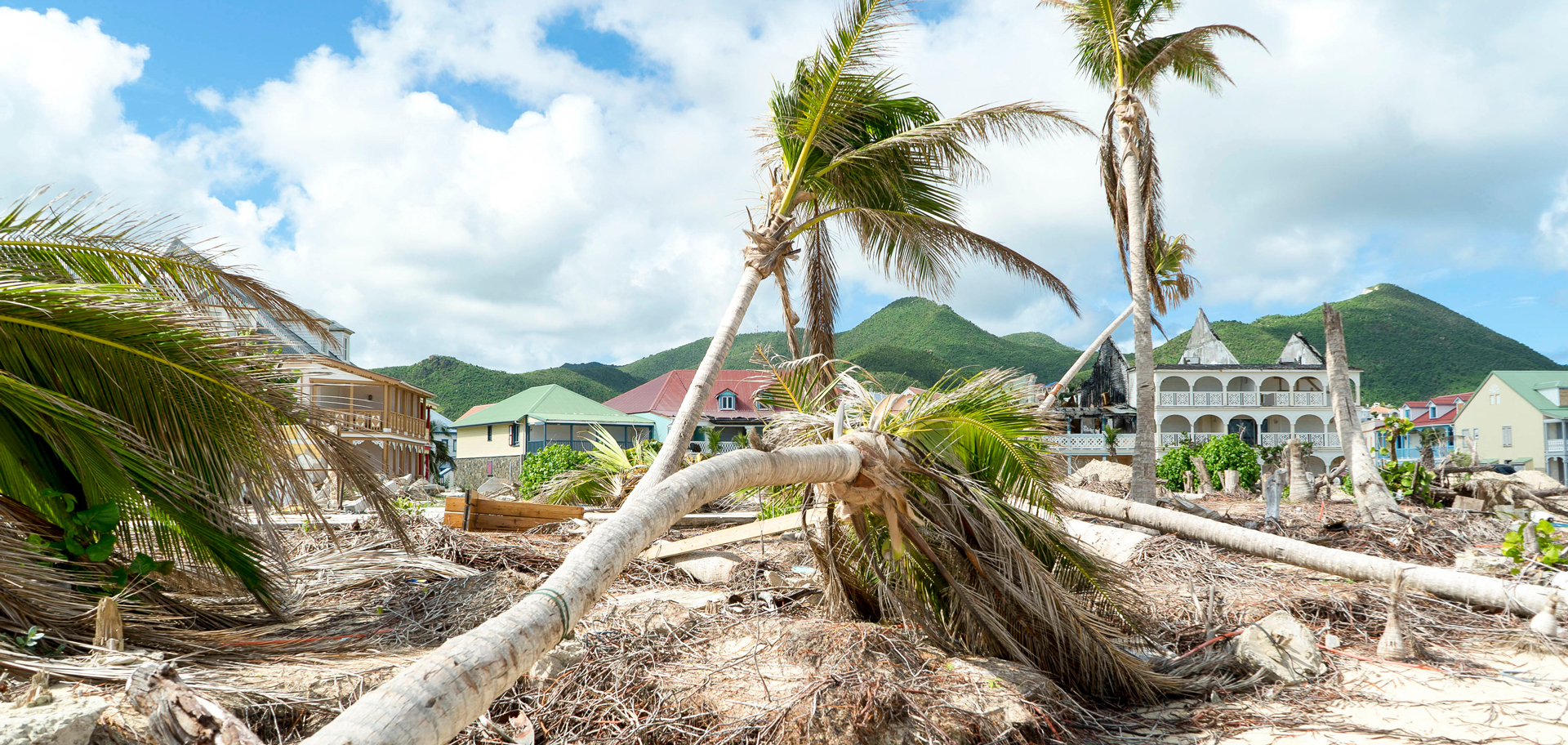Dangerous Climate Whiplash: Assessing The Risks To Urban Areas Globally

Table of Contents
Understanding Climate Whiplash in Urban Environments
Climate whiplash refers to the rapid and unpredictable transitions between contrasting extreme weather events. Unlike gradual climate change, climate whiplash involves sudden and dramatic shifts, posing immense challenges for urban planning and infrastructure. This unpredictability makes it extremely difficult to predict and prepare for these events, amplifying their devastating consequences.
The scientific mechanisms behind climate whiplash are complex and interconnected. It's driven by climate change, which alters atmospheric and oceanic patterns, leading to more volatile weather systems. This can manifest in several ways:
- Increased frequency of heatwaves followed by intense rainfall events: A prolonged heatwave can dry out the soil, reducing its capacity to absorb rainfall, leading to severe flooding when intense precipitation occurs.
- Rapid transitions between drought and flooding: Regions experiencing prolonged drought can suddenly be hit by torrential rains, overwhelming infrastructure and causing widespread damage.
- Unexpected surges in extreme temperatures impacting vulnerable populations: These unpredictable temperature swings can exacerbate health risks, particularly for the elderly, children, and those with pre-existing health conditions.
- The cascading effect of these events on infrastructure and services: One extreme event can weaken infrastructure, making it more vulnerable to subsequent events, creating a dangerous domino effect.
Vulnerability of Urban Infrastructure to Climate Whiplash
Urban infrastructure is particularly vulnerable to the shocks of climate whiplash. The interconnected nature of city systems means that a disruption in one area can have cascading effects throughout the entire system. Specific vulnerabilities include:
- Overburdened drainage systems leading to flooding and water damage: Intense rainfall following dry periods can overwhelm outdated drainage systems, leading to widespread flooding and significant property damage.
- Power outages caused by extreme heat or storms: Extreme heat can strain power grids, while storms can cause widespread damage to power lines, leading to prolonged outages with serious economic and social consequences.
- Transportation disruptions due to extreme weather events: Floods, snowstorms, and extreme heat can severely disrupt transportation networks, impacting commuters, businesses, and emergency services.
- Damage to buildings and residential areas: Extreme weather events can cause direct damage to buildings, leading to displacement, injuries, and economic losses.
- Increased risk of disease outbreaks following extreme weather: Flooding and extreme heat can create breeding grounds for disease vectors, increasing the risk of waterborne and vector-borne illnesses.
Social Impacts and Equity Considerations
Climate whiplash disproportionately impacts vulnerable populations within urban areas. Low-income communities, the elderly, marginalized groups, and those living in informal settlements are often the most exposed to the risks and least equipped to cope with the consequences.
- Increased risk of heat-related illnesses and deaths in vulnerable communities: Heatwaves are particularly dangerous for vulnerable populations lacking access to air conditioning or adequate healthcare.
- Loss of livelihoods due to damage to businesses and infrastructure: Small businesses and informal workers are particularly vulnerable to economic losses caused by extreme weather events.
- Increased inequality due to unequal access to resources and support during emergencies: Vulnerable communities often lack access to resources and support during emergencies, exacerbating existing inequalities.
- Mental health impacts of repeated extreme weather events and displacement: The repeated experience of extreme weather events and displacement can have significant negative impacts on mental health.
Mitigation and Adaptation Strategies for Urban Resilience
Building more resilient urban areas requires a multi-faceted approach that incorporates mitigation and adaptation strategies:
- Investing in resilient infrastructure: Upgrading infrastructure to withstand extreme weather events, including improved drainage systems, flood defenses, and heat-resistant building materials, is crucial.
- Implementing green infrastructure: Integrating green spaces, green roofs, and permeable pavements can help manage stormwater runoff, reduce the urban heat island effect, and improve air quality.
- Developing early warning systems for extreme weather events: Reliable and timely warnings can help communities prepare for and respond to impending extreme weather events.
- Enhancing community preparedness and response plans: Community-based disaster preparedness plans can improve response times and minimize the impact of extreme weather events.
- Implementing policies that promote social equity and climate justice: Policies should address the disproportionate impacts of climate whiplash on vulnerable populations, ensuring equitable access to resources and support.
Conclusion
Climate whiplash poses a grave and growing threat to urban areas globally. The unpredictable nature of these extreme weather events, coupled with the vulnerabilities of urban infrastructure and the disproportionate impact on vulnerable populations, demands urgent action. Proactive mitigation and adaptation strategies are essential to build more resilient cities and safeguard the well-being of urban communities. We must invest in resilient infrastructure, develop early warning systems, and implement policies that promote social equity and climate justice. Learn more about climate whiplash and its effects on your community, engage in local initiatives aimed at improving urban resilience, and advocate for stronger climate policies to reduce the risks of dangerous climate whiplash and protect vulnerable urban populations. Further research and discussion on effective strategies for tackling climate whiplash in urban areas are crucial for building a more sustainable and resilient future.

Featured Posts
-
 Le Samsung Galaxy S25 Ultra 256 Go Un Top Produit A Ce Prix
May 28, 2025
Le Samsung Galaxy S25 Ultra 256 Go Un Top Produit A Ce Prix
May 28, 2025 -
 Roland Garros 2024 Alcaraz And Swiateks Opening Wins
May 28, 2025
Roland Garros 2024 Alcaraz And Swiateks Opening Wins
May 28, 2025 -
 Saudia Pilihan Tepat Untuk Penerbangan Bali Jeddah
May 28, 2025
Saudia Pilihan Tepat Untuk Penerbangan Bali Jeddah
May 28, 2025 -
 Brewers Vs Diamondbacks Prediction Picks And Odds For Todays Mlb Game
May 28, 2025
Brewers Vs Diamondbacks Prediction Picks And Odds For Todays Mlb Game
May 28, 2025 -
 Euromillions Hits Record 202m Your Guide To Winning Big
May 28, 2025
Euromillions Hits Record 202m Your Guide To Winning Big
May 28, 2025
Latest Posts
-
 Como Afectara La Orden Ejecutiva De Trump A La Compra De Boletos Y Ticketmaster
May 30, 2025
Como Afectara La Orden Ejecutiva De Trump A La Compra De Boletos Y Ticketmaster
May 30, 2025 -
 Oasis Tour Ticket Scandal Assessing Ticketmasters Alleged Breach Of Consumer Protection Laws
May 30, 2025
Oasis Tour Ticket Scandal Assessing Ticketmasters Alleged Breach Of Consumer Protection Laws
May 30, 2025 -
 Ticketmaster Revoluciona La Compra De Boletos Descubre Virtual Venue
May 30, 2025
Ticketmaster Revoluciona La Compra De Boletos Descubre Virtual Venue
May 30, 2025 -
 Donald Trump Y La Lucha Contra La Reventa Impacto De La Nueva Orden Ejecutiva En Ticketmaster
May 30, 2025
Donald Trump Y La Lucha Contra La Reventa Impacto De La Nueva Orden Ejecutiva En Ticketmaster
May 30, 2025 -
 Oasis Concert Ticket Sales Investigating Ticketmasters Compliance With Consumer Protection Regulations
May 30, 2025
Oasis Concert Ticket Sales Investigating Ticketmasters Compliance With Consumer Protection Regulations
May 30, 2025
